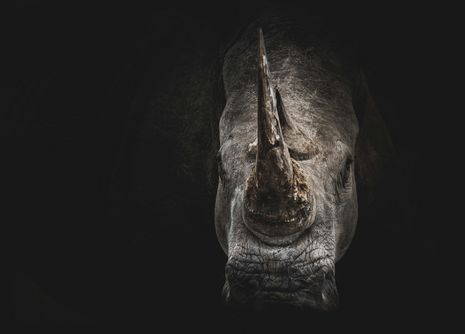Which species should we save?
Izavel Lee explains how inadequate funding is forcing conservationists to make tough choices about which species to save – and which to leave behind

Conservation is an expensive endeavour. To reverse the current rate of species loss, it has been estimated that we need to spend up to $900b a year. The current reality? We are only spending a fraction of that: $80-90b per year. This severe deficit has made it challenging for conservationists across the world to protect endangered species from extinction. To make matters worse, threatened species tend to be concentrated in the poorest countries, with the 40 most underfunded countries containing 32% of all threatened animal diversity.
This severe lack of funding has led some conservationists to support the idea of conservation triage. Just as medical triage prioritises patients with the most serious injuries for treatment, conservation triage aims to prioritise the most valuable species with a high risk of extinction and a good chance of being saved. Existing conservation funding is disproportionately allocated: in the US, the bull trout receives 10 times as much funding as it needs, while most listed species receive much less. As such, from a utilitarian point of view, conservation triage makes sense. Spending more money than is necessary to conserve a species does not significantly affect conservation outcomes. That surplus might be better spent on species that need it more. Some species might also never recover no matter how much money is invested – the $2 million invested in the Canadian woodland caribou, for example, hasn’t done much to better its prospects. Should we continue to allocate more money to such species when there are others with a better chance of conservation?
Triage supporters also believe that such budget planning could better convince policymakers to increase funding in conservation by clearly setting out the benefits and costs of saving particular species. In New Zealand, conservation scientists were able to create a priority list of endangered species based on cost and chance of success. This has helped hundreds more species get the funding they need, as well as improved their management.
"Should we continue to allocate more money to such species when there are others with a better chance of conservation?"
Moreover, triage could help with the conservation of less charismatic species. Ever heard of Attenborough’s Long-beaked Echidna? Despite carrying the name of a world-famous naturalist, this marsupial has such a low profile that there isn’t even an official distribution map for the species. Unlike more popular species like tigers and pandas that have captured the public’s imagination, many species like the Long-beaked echidna receive little to no conservation attention. Such unpopular species tend to be “EDGE” species: evolutionarily distinct and globally endangered. In other words, they are the last members of unique evolutionary lineages. Losing them would mean losing entire evolutionary branches from the tree of life. Instead of allocating funds based on public popularity, triage systems could direct money to species with genuine need.
But not everyone is on board with the idea of prioritising certain species for saving. In particular, the economic rhetoric behind many triage plans has given some conservationists pause. The inherent value of biodiversity is not something that can be quantified easily in dollars and cents, and any such valuation is necessarily human-centric. The focus on “dollar efficiency” is overly clinical and ignores our moral obligation to protect our fellow species. Such resistance to applying the language of economics is not new in conservation, with the recently published Dasgupta Review having received similar criticism.
There are also concerns that conservation triage is vulnerable to corruption, providing politicians with a way to justify any underfunding with seemingly objective arguments. Politicians are not obliged to follow the rankings set by their environmental agencies, so triage is limited as a tool for conservation in that it fails to tackle the root issue of underfunding. For example, despite the US Federal Wildlife Service having ranked endangered species since 1983, the Government Accountability Office found in 2005 that other factors such as “office workload, Congressional earmarks, and the potential for attracting extra money” were considered more heavily than the actual ranks of the species. The severe lack of funds in some countries might mean that even triage won’t significantly help conservation efforts, with some scientists describing it as “rearranging deck chairs on a sinking ship”.
Should we see triage as simply being smarter with funding, or does it signify resignation towards the biodiversity crisis that we face? Either way, the idea of triage has clearly been unpleasant for conservationists. But with funding unlikely to increase drastically in the coming years, decision makers may have to face up to deciding which species should live and which will die.
 News / Uni members slam ‘totalitarian’ recommendation to stop vet course 15 January 2026
News / Uni members slam ‘totalitarian’ recommendation to stop vet course 15 January 2026 Science / Why smart students keep failing to quit smoking15 January 2026
Science / Why smart students keep failing to quit smoking15 January 2026 Comment / Will the town and gown divide ever truly be resolved?12 January 2026
Comment / Will the town and gown divide ever truly be resolved?12 January 2026 Features / How sweet is the en-suite deal?13 January 2026
Features / How sweet is the en-suite deal?13 January 2026 Interviews / The Cambridge Cupid: what’s the secret to a great date?14 January 2026
Interviews / The Cambridge Cupid: what’s the secret to a great date?14 January 2026










